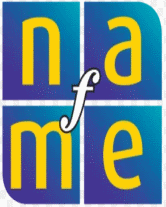Introduce your class to the artistic characters, vocal music, and instruments of Chinese opera.
Objectives
- Students will study Chinese opera by sketching pictures of Chinese opera characters and musical instruments.
- Students will watch the film A Night at the Peking Opera, noting the elaborate costuming, the sparse staging, and the highly developed use of mime.
- Students will listen to a brief segment of spoken dialogue and an aria from Peking opera, particularly noticing the tense, nasalized vocal quality.
Materials
- Illustrations of Chinese opera characters and instruments one source is Peking Opera: A Short Guide by Elizabeth Halson (Hong Kong: Oxford University Press, 1966)
- Film: A Night at the Peking Opera
- Recording: The Chinese Opera, from Music Resources for Multicultural Perspectives (Reston, VA: Music Educators National Conference, 1995)
- Bulletin board
Procedure
- Explain that Chinese opera is a brilliant art form in which musical dramas are executed by elaborately attired actors who speak the dialogue and sing songs (arias). Among the interesting visual features of the opera are the beautiful costumes and the ornate make-up used by the characters. Each character is dressed in a distinctive costume to highlight his or her position in the drama.
- Have the students sketch pictures of Chinese opera characters and musical instruments (using models from Peking Opera: A Short Guide) and place them on the bulletin board.
- Watch the film A Night at the Peking Opera. This film contains several segments from different operas. Notice the elaborate costuming of the characters, the great attention placed on mime (specifically how the characters are able to create powerful effects through imaginative suggestion), and the distinctive spoken dialogue and singing style.
- Listen to an aria from The Chinese Opera. This aria contains brief segments of dialogue and is sung by two characters who are accompanied by jinghu and erhu, dizi, and percussion. Have the students pay particular attention to the singers' nasalized tone quality and lack of wide vibrato, the elongated speech patterns of the dialogue, the heterophonic nature of the accompanying stringed and wind instruments, and the punctuating and concludingpercussion sounds.
- As the students listen, have them circle the appropriate items (correct answers are bolded) from the following list:
1. Voices only or Voices and instruments 2. Loud dynamic level or Soft dynamic level 3. Nasalized tone colors or Open, full sounds 4. Brass instruments or Percussion instruments 5. Chordal harmony or Heterophony - Summarize the lesson by having the class review some of the distinctive features of Chinese opera.
Standards Correlations
Standard 6
: Listening to, analyzing, and describing musicStandard 7
: Evaluating music and music performancesStandard 8
: Understanding relationships between music, the other arts, and disciplines outside the arts
This lesson was contributed by William M. Anderson.
Excerpted fromMulticultural Perspectives in Music Education.

| Provided in partnership with NAfME |
Introduce your class to the artistic characters, vocal music, and instruments of Chinese opera.
Holidays
TYPE:



